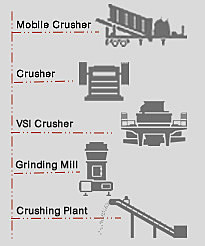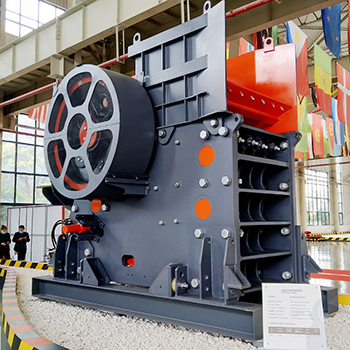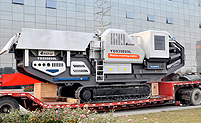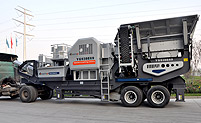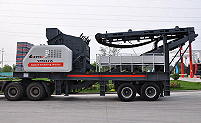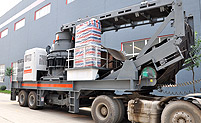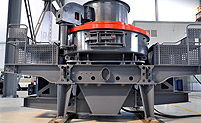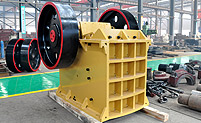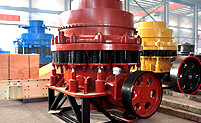Hematite iron ore crusher
Recommand Crushers:
Kenya is a country which is rich in mineral resources, such as copper,iron, titanium, manganese, gold, and so on. When you want the exploitation of mineral stone, there are many choices. But we provide you with the best combination, improve efficiency and reduce energy Consumption, and we provide mobility to facilitate the migration of the broken program , such as portable crushing plant or mobile crushing plant.
The best crusher combination for hematite :
jaw crusher, jc jaw crusher, hp cone crusher, pfw impact crusher.
INTRODUCTIONS:
Iron ores are rocks and minerals from which metallic iron can be economically extracted. The ores are usually rich in iron oxides and vary in color from dark grey, bright yellow, deep purple, to rusty red. The iron itself is usually found in the form of magnetite (Fe3O4), hematite (Fe2O3), goethite (FeO(OH)), limonite (FeO(OH).n(H2O)) or siderite (FeCO3). Hematite is also known as "natural ore", a name which refers to the early years of mining, when certain hematite ores containing up to 66% iron could be fed directly into iron-making blast furnaces. Iron ore is the raw material used to make pig iron, which is one of the main raw materials to make steel. 98% of the mined iron ore is used to make steel. Indeed, it has been argued that iron ore is "more integral to the global economy than any other commodity, except perhaps oil.”.
Metallic iron is virtually unknown on the surface of the Earth except as iron-nickel alloys from meteorites and very rare forms of deep mantle xenoliths. Although iron is the fourth most abundant element in the earth's crust, comprising about 5%, the vast majority is bound in silicate or more rarely carbonate minerals. The thermodynamic barriers to separating pure iron from these minerals are formidable and energy intensive, therefore all sources of iron used by human industry exploit comparatively rarer iron oxide minerals, the primary form which is used being hematite.
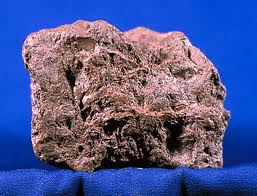
Production and consumption
Iron is the world's most commonly used metal - steel, of which iron ore is the key ingredient, represents almost 95% of all metal used per year. It is used primarily in structural engineering applications and in maritime purposes, automobiles, and general industrial applications (machinery).
Iron-rich rocks are common worldwide, but ore-grade commercial mining operations are dominated by the countries listed in the table aside. The major constraint to economics for iron ore deposits is not necessarily the grade or size of the deposits, because it is not particularly hard to geologically prove enough tonnage of the rocks exist. The main constraint is the position of the iron ore relative to market, the cost of rail infrastructure to get it to market and the energy cost required to do so.
Mining iron ore is a high volume low margin business, as the value of iron is significantly lower than base metals. It is highly capital intensive, and requires significant investment in infrastructure such as rail in order to transport the ore from the mine to a freight ship. For these reasons, iron ore production is concentrated in the hands a few major players.
World production averages two billion metric tons of raw ore annually. The world's largest producer of iron ore is the Brazilian mining corporation Vale, followed by Anglo-Australian companies BHP Billiton and Rio Tinto Group. A further Australian supplier, Fortescue Metals Group Ltd has helped bring Australia's production to second in the world.
The seaborne trade in iron ore, that is, iron ore to be shipped to other countries, was 849m tonnes in 2004. Australia and Brazil dominate the seaborne trade, with 72% of the market. BHP, Rio and Vale control 66% of this market between them.
In Australia iron ore is won from three main sources: pisolite "channel iron deposit" ore derived by mechanical erosion of primary banded-iron formations and accumulated in alluvial channels such as at Pannawonica, Western Australia; and the dominant metasomatically-altered banded iron formation related ores such as at Newman, the Chichester Range, the Hamersley Range and Koolyanobbing, Western Australia. Other types of ore are coming to the fore recently, such as oxidised ferruginous hardcaps, for instance laterite iron ore deposits near Lake Argyle in Western Australia.
The total recoverable reserves of iron ore in India are about 9,602 million tones of hematite and 3,408 million tones of magnetite. Madhya Pradesh, Karnataka, Bihar, Orissa, Goa, Maharashtra, Andhra Pradesh, Kerala, Rajasthan and Tamil Nadu are the principal Indian producers of iron ore.
World consumption of iron ore grows 10% per annum on average with the main consumers being China, Japan, Korea, the United States and the European Union.
China is currently the largest consumer of iron ore, which translates to be the world's largest steel producing country. It is also the largest importer, buying 52% of the seaborne trade in iron ore in 2004. China is followed by Japan and Korea, which consume a significant amount of raw iron ore and metallurgical coal. In 2006, China produced 588 million tons of iron ore, with an annual growth of 38%.
PrevPage: Architectural sand making crusher
Next Page: Calcium carbonate grinding mill plant

